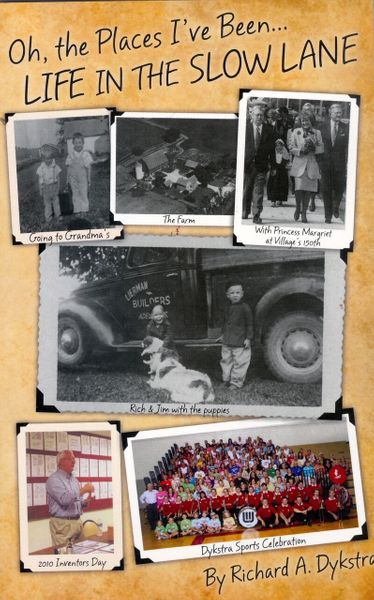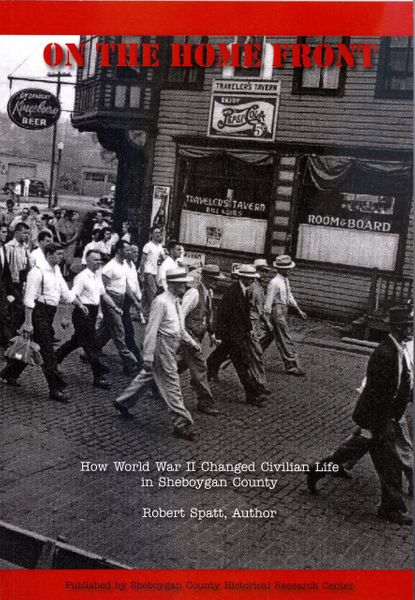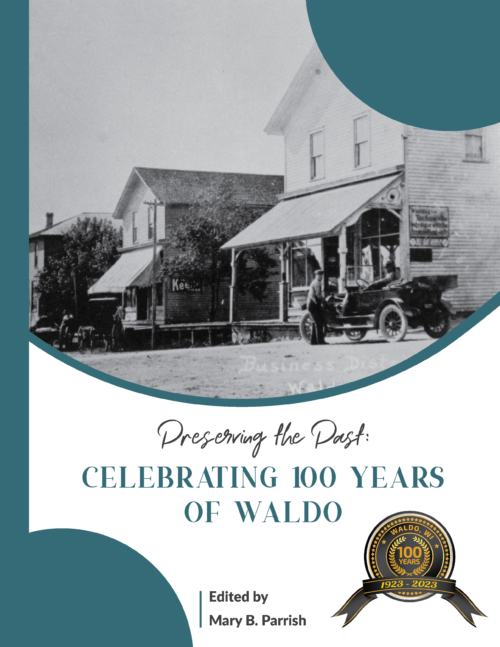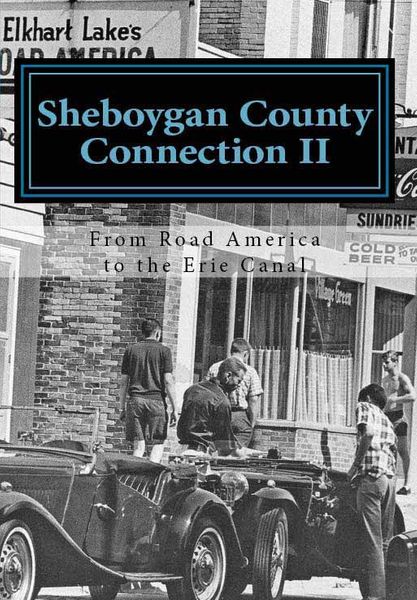-
Sale!Though we have nothing as dramatic as Pompeii, Mesa Verde or Petra, we, too, have lost settlements. Our lost settlements like Hoard, New Paris, Bear Lake, Gooseville and Hull’s Crossing are lost places of Sheboygan County- communities that were, for a short time, vibrant and busy, but fell into decline and disappeared except for the occasional mention on an old Sheboygan County map.We’ll take a trip back to reconnect with many of our local mysteries.Available about December 6, 2018.
-
Sale!Since 1961, Mayors of Sheboygan have been elected to four-year terms and considered full-time mayors. Prior to 1961, Mayors were considered part-time mayors because the men had other jobs, while also serving as mayor. Starting in 1853, the men who ran for mayor were nominated by local political parties which many times made things interesting. There were times when the man nominated for mayor did not want the job. In the 165 year history of Sheboygan, little has been done to honor the men who served as mayor. This book is an effort to pay tribute to them and accurately, yet simply, document their political tenure. The vignettes that follow are in alphabetical order for ease of organization. Filled with photos this includes biographies of all of the city of Sheboygan’s part-time and full-time mayors.
-
By Millersville Historical Research Group
The history of the area dates back to 1846 when the first immigrants found their way along the Pigeon River and settled in the area. At first the two settlements were known as Howards and Mueller Villa, later becoming Howards Grove and Millersville.
But in 1967, the two communities incorporated as Howards Grove-Millersville, becoming Sheboygan County’s 10th village, the fourth largest. It also brought the village fame with its cumbersome 24-letter title, the longest in the state. Eventually, the city dropped Millersville and took Howards Grove as its proper name. This book follows the history of just the Millersville portion of the area.
-
Out of stockBy Florence Fenner Popp Mohrsville was a small settlement located at the intersection of the Green Bay and Howards Roads in the town of Herman approximately 2 miles north of Sheboygan Falls. In the early 1900s Highway 32 was known as the Green Bay Road, and later for some time, it was Highway 42. Until World War II, County O was known as the Howards Road. Mohrsville consisted of: Starlight School, Mohnsam’s, the old cheese factory where Carol and Manny Zunker lived and Zunker’s garage. It was named for Paul Mohr who formerly owned a tavern there
-
By Rich Dykstra Rich is back with another series of short stories about life in the 1950s and 1960s. Life in the Slow Lane deals with seemingly mundane but very memorable activities that Dykstra participated in as a child – shopping trips to Sheboygan when it took a week or more of planning, going to the outhouse, Friday nights in Sheboygan Falls capped off with a stop at Bob’s Lunch, a one-room school fair, Sundays at Grandma’s, the anxious anticipation of a first Milwaukee Braves game, life in the era of polio and something called Sunday Rules.
-
By Robert Spatt On the Home Front is a chronological account of daily life for Sheboygan residents and how it changed dramatically during WWII. The story is told by way of actual headlines, story excerpts, photographs, editorials and advertisements as published in Sheboygan County newspapers at that time.
-
Sale!By Arthur G. Kroos, Jr This is the story of one Sheboygan County soldier, Arthur G. Kroos, Jr., from his enlistment in Company F, 127th Regiment, 32nd Division in the fall of 1940, until release in 1945. Mr. Kroos was chosen to serve a stint as Aide-de-Camp to General Matthew Ridgway. He was trained as a paratrooper seeing service in Northern Ireland, North Africa, Sicily, Italy and on D-Day in France. His final military foray took place in a glider as part of Operation Market-Garden. He was shot down over the Dutch island of Schouwen and spent eight months as a POW at Luft Stalag 1 in Barth, Germany. This book contains his own diary from Luft Stalag 1 and entries from a scrapbook created by his wife, Patty. This is not your average WWII story. It is local history at its best.
-
By James E. Schultz. More than a history about Schultz's great grandparents, this book features:
- threads of our German heritage, including food, wine and beer, language, religion, music, dance, and customs woven into the family history and indexed;
- sections devoted to “Why they came”, “Today’s German Attitudes”, and “People and Places”;
- a “Special Find” for each of the eight featured ancestors, a genealogical gem that I uncovered;
- a wide variety of church, government, military, personal, and other resources, with a list of 40 resources cataloged as an appendix; and,
- a section called “Challenges, Tips, and Surprises” that provides helpful pointers for finding information.
-
Sale!By Scott Knickelbine On the night of October 8, 1871, a whirlwind of fire swept through northeastern Wisconsin, destroying the bustling frontier town of Peshtigo. Trees, buildings, and people burst into flames. Metal melted. Sand turned into glass. People thought the end of the world had come. When the "tornado of fire" was over, 2,500 people were dead, and Peshtigo was nothing but a smoking ruin. It was the deadliest wildfire in U.S. history. Kids’ book.
-
By John Textor This is the story of the November 1847 sinking of the propeller ship, Phoenix, from a new perspective. Most of the fatalities were of new Dutch immigrants and this book tells of how life might have been different had the catastrophe not happened.
-
By Oostburg Historical Society Hundreds of photos of the village of Oostburg. Designed as a companion book to Oostburg, Haven of Hope.
-
By Bernard Michaels A story of the settlement of the northern Kettle Moraine in Sheboygan County, Wisconsin focusing on the town of Mitchell.
-
Sale!By Robert Matzner Sheboygan resident, Robert Matzner, had a very important story to tell. Friend, Larry Vogel, helped him to put pen to paper. The result is Prisoner 19053, the true story of Matzner’s three years in Nazi concentration camps. Matzner, a native of Poland, lost most of his family to the Nazi’s Final Solution. He somehow survived the horror and came to the United States and Sheboygan with his family in 1949. Robert and Larry have written a remarkable document, a story full of sadness and hope which will touch all readers. The introduction, written by Robert’s son, Murray, is a poignant tribute and a great beginning to Prisoner 19053.
-
Sale!The Random Local History Reader is filled with odd and interesting history. What is the real story of the Dead Horse? Who was the Black Terror of Sheboygan? Have you ever read an obituary for an outhouse? Learn the meaning of the term, Yeggman. Find out why Cupid was baffled. And read the full story behind the murder of revered, early teacher, John Sexton. Great reading for quiet time, you’ll enjoy every story and photo included in this random collection of historical gems.
-
Rebuilding a Railroad in the 21st Century: Sheboygan County, Wisconsin, documents the rebuilding of an 11-mile rail line in Sheboygan County, after being dormant for nearly 30 years. This was more than just a fix-it-up job, but the replacement of the entire line from the ground up with new track built to modern standards to handle heavy loads. It also required one trestle to be completely replaced and others reinforced. Adding to the generous amount of photos, there are “before” and “after” photos taken at dozens of locations, and it won’t seem possible that these photos were taken at the same location. Also included is the history of this line from the pre-civil war era to current times. Old rail dating back over 150 years was found and included is the story that these old rails tell.
-
By Howards Grove Historical Research Group, Doris Henschel.
Ada was one of four small trading places (Howard, Franklin, Edwards and Ada) in the township in 1912. Ada consisted of a hotel, cheese factory, store and blacksmith. The population of town Herman in 1910 was 1,913, the majority of whom were Germans. This hamlet, located on the old Calumet-Sheboygan Plank Road twelve miles northwest of Sheboygan has a name of unknown origin. The post office was established on January 13, 1868, with Anton Goepfert acting as the first postmaster. Operations were discontinued on November 18, 1873. It was re-established on August 31, 1877, and once again discontinued permanently on April 30, 1909. William Maurer was the last postmaster. The book is full of history and wonderful memories.
-
The story of the Milwaukee Northern . . . Sheboygan's interurban link to the rest of the world by Peter Fetterer. Available by about November 30, 2018.
-
Sale!By Mary Jane Gruett Twelve year old Derk Van Vliet began the adventure of a lifetime in Holland in 1847. He left his home, his friends and his faithful dog, Bello, to begin a new life in America. But, disaster struck as his ship came within sight of its destination, Sheboygan, Wisconsin. The Phoenix, a Great Lakes steamer, normally delivered immigrants to their new homes. But, on Derk’s voyage, the doomed Phoenix, was part of an historic disaster which would cause Derk to question everything about life. He would have to forge ahead to find a new life and search to find courage deep within himself.
-
Sale!
By Bill Wangemann.
This is a collection of Sheboygan City Historian, Bill Wangemann’s 2005 and 2006 Sheboygan Press articles. Topics include Memories of Railroads, Electric Rail or the Interurbans, maritime stories- The Burning of the Niagara and The Mysterious Loss of the Pere Marquette 18, movies, TV and drive-in theater, Garton Toy and its fire, the stumpff fiddle and so much more.
-
The Sheboygan County Connection is a collection of forty-one stories about the way folks from Sheboygan County are connected to the greater world. Most were seen as Sheboygan County History columns in the Sheboygan Press from February to October 2014. Extra information and photos have been added. Topics range from ice fishing and the brutal winter of 1936 to the advent of Rocky Knoll and citizens’ participation in the Manhattan Project.
-
This is the second volume in a series. It contains more than fifty stories about Sheboygan County citizens and the amazing ways they participated in important history. Topics range from the 1950s bomb shelter scare to the opening of Road America and Clif Tufte to the opening of the Erie Canal in the 1830s.
-
Sheboygan County Connection III is the continuing record of the lives of Sheboygan County residents and their adventures in history. Read about dozens of historic happenings experienced by residents from the death and autopsy of victims of Ed Gein to the mysteries of Sheboygan's Rancho de las Flores, refugees of the Great Chicago Fire of 1871, the architect for the construction of the first Mormon Temple at Nauvoo, Illinois and history of outhouses. These stories ran in the Sheboygan Press from November 2015 to October 2016.
-
This is a compilation of articles run in the Sheboygan Press during late 2016 and early 2017. Story titles include: What we used to do at Sheboygan's zoo Remembering Sheboygan County’s forgotten places Interurbans’ meteoric rise, then fall Remembering American wars from the Home Front Memories from a town of Mitchell farm Recalling Sheboygan's unsavory 1920s, 1930s Quirky forgotten laws abound in Sheboygan When bootleggers smuggled margarine Pinehurst Farms boasts rich history Letters to Santa offer look into kids' lives Discovering stories of lost places in Sheboygan County Remembering the architectural trend of octagon houses Appreciation of Grassroots art emerges in recent decades Advertisements reflect culture, paint picture of past Passengers on Orphan Train found home in Sheboygan Dozens of brothels housed in county in early 1900s How Sheboygan cleaned up after hosting brothels






























